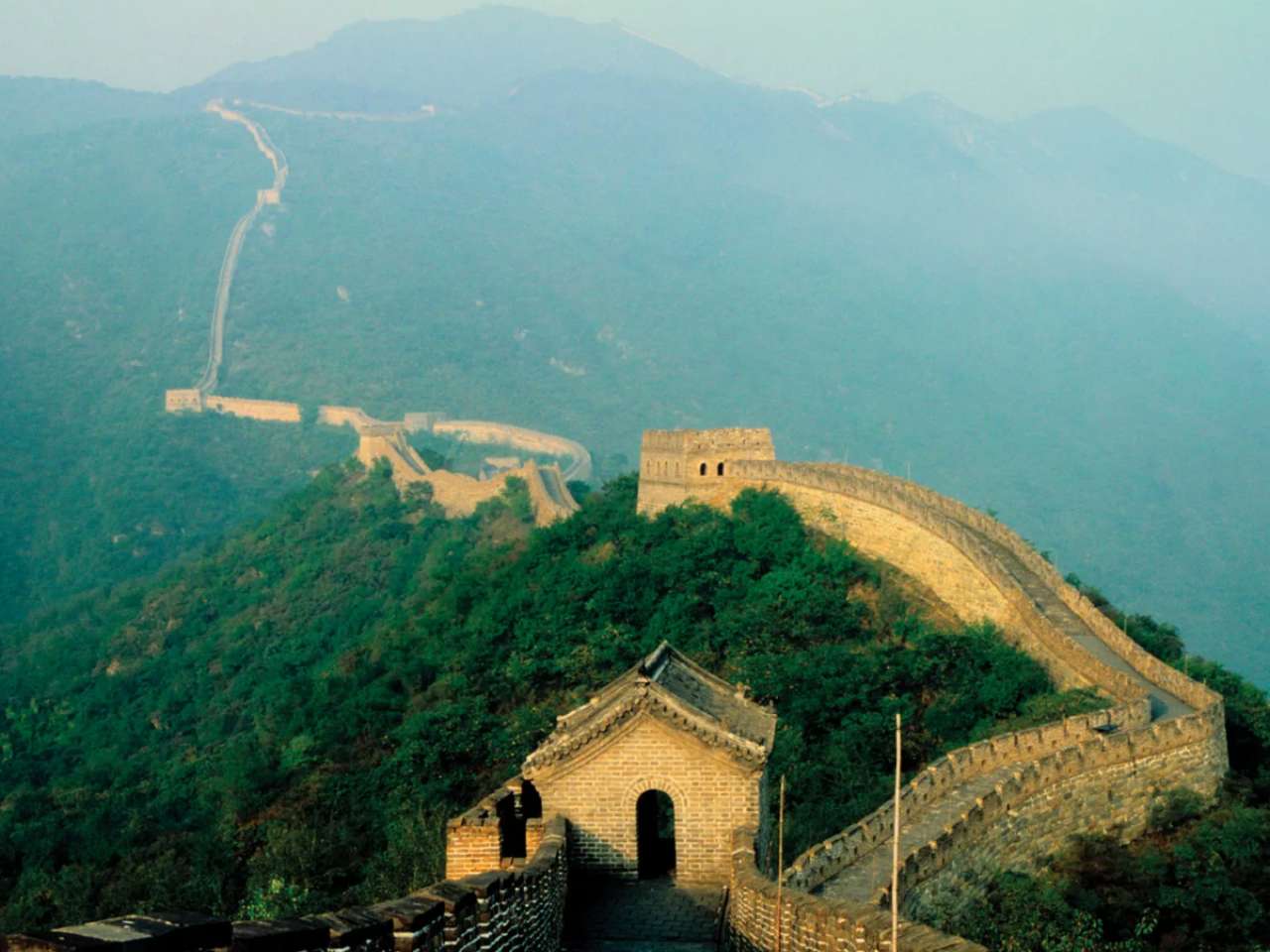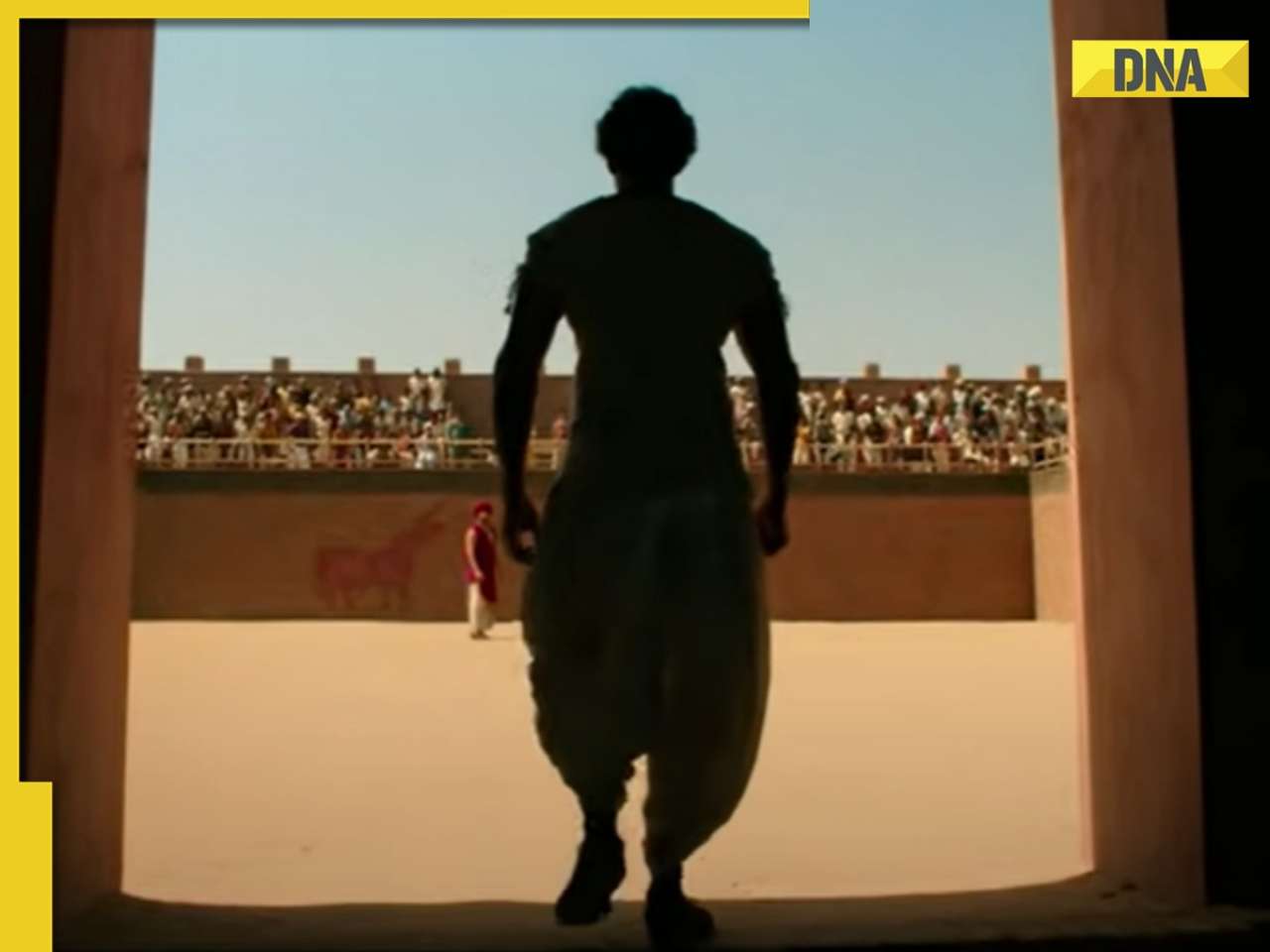As for the awareness about earthquakes, it needs to be created with some serious effort by the government authorities since about one third of India falls in seismically vulnerable zones with several of our cities and towns facing the earthquake risk.
January 26, 2001, our Republic Day, turned out to be a day of unprecedented tragedy for thousands of residents of Bhuj and neighbouring villages in Kutch, Gujarat, for it was on this day, almost coinciding with the flag-hoisting ceremony in the morning that the most powerful earthquake in recent memory, of magnitude 7.9 on the Richter's scale, struck the region with such a devastating force that over 20,000 people lost their lives and several villages like Bhachau and Anjar were totally razed down without any vestige of their original prosperous living.
Not only that, the trail of devastation extended as far as Ahmedabad through many towns in Saurashtra and the shock was felt even in Mumbai, 700 km away. This then was the havoc wrought by the disastrous quake.
For all that, unlike the Latur-Osmanabad districts of Maharashtra which were believed to be immune to earthquake occurrence until the geoscientifc community was rudely woken up by a 6.5 M quake at Killari on September 30, 1993, the Kachch region was known to be highly seismic even in 1937 when it figured in the first Earthquake Map of India that appeared in a research paper which carried valuable information on earthquake-proof construction also.
It was pitiable therefore that, with all that valuable background information, the region still allowed itself to be ravaged by the unexpected and unwelcome visitor on that fateful January morning.
This only goes to show the total lack of awareness among the public of earthquakes and how to go about protecting lives and property in our country.
Sadly, the situation does not seem to have changed in all these ten long years.
As for the awareness about earthquakes, it needs to be created with some serious effort by the government authorities since about one third of India falls in seismically vulnerable zones with several of our cities and towns facing the earthquake risk like Srinagar, Shimla, Delhi, Dehra Dun, Uttarkashi, Guwahati, Shillong, Port Blair and Mumbai to mention a few.
In recent years there have been three major quakes — the Latur quake of 1993, the Jabalpur quake of 1997 and the Bhuj tremor of 2001.
Significantly, in all these places, there have been observable 'earthquake scars' on the ground left behind by the quakes like long cracks, displacements on the ground and roads, twisting of telegraph poles, rotation of bricks on the walls of wells, settlement and tilting of buildings, etc. Even if some of these have been lost with time, a few of them if still seen deserve to be preserved for posterity in what can be called 'field quake museums'.
This is what precisely the Americans have done in California which is their most highly seismic state due to the presence of the 'San Andreas Fault', an important geological feature of tremendous earthquake potential that runs all along the coast from San Francisco to Los Angeles. This 'fault' had brought about the great San Francisco earthquake of 1906 and can be traced on the ground as a long crack for its entire length.
It had displaced several features in the region and some of them like the offset of a fence by some five metres at Point Raise has been preserved all these hundred years with proper annotations on boards fixed to the ground to enable any visitor to have a look at it and appreciate what the quake had done.
Besides, the United States Geological Survey (USGS) issues several illustrated pamphlets on earthquakes for public consumption periodically and is constantly keeping the Californians focused on earthquakes with their research data that the next big quake is expected by 2030, most probably by 2015. The seismic awareness in USA is therefore quite high.
There is no reason why such an earthquake-awareness cannot be created in our country in the interest of public safety
by our own Geological Survey of India and other government agencies.
The other part pertains to building our houses conforming to standard specifications and adopting special designs to make them resistant to earthquakes. Such techniques have been there for more than seventy years now and these should be employed without fail to see that the buildings are not damaged by earthquake waves since nothing else can be done to survive the quakes which are neither predictable nor preventable.
It needs to be emphasised here that the heavy death tolls in interior Maharashtra during the Latur quake (10,000) and in Kachch during the Bhuj quake (20,000) were entirely due to extremely poor construction of the houses using basalt rock boulders and mud and sandstone with similar mud respectively.
In contrast, reasonably good construction even if it was not anything special in Jabalpur in Madhya Pradesh had ensured that the death toll was only about sixty during the quake of 1997. This should serve as an eye-opener for the whole country.
Existing buildings can also be seismically strengthened using appropriate methods available for the same. At the moment the degree of awareness and the intent to adopt life-saving construction techniques among the public appear to be nonexistent from all accounts. Both these need to be attended to on a war footing.
![submenu-img]() Viral video: Kind man assists duck family in crossing the road, internet lauds him
Viral video: Kind man assists duck family in crossing the road, internet lauds him![submenu-img]() Can you see the Great Wall of China from space? here's the truth
Can you see the Great Wall of China from space? here's the truth![submenu-img]() Ashutosh Rana breaks silence on his deepfake video supporting a political party: 'I would only be answerable to...'
Ashutosh Rana breaks silence on his deepfake video supporting a political party: 'I would only be answerable to...'![submenu-img]() Meet India's most talented superstar, is actor, dancer, stuntman, singer, lyricist; not Ranbir, Shah Rukh, Aamir, Salman
Meet India's most talented superstar, is actor, dancer, stuntman, singer, lyricist; not Ranbir, Shah Rukh, Aamir, Salman![submenu-img]() This flop film was headlined by star kid, marked south actress's Bollywood debut, made in Rs 120 crore, earned just...
This flop film was headlined by star kid, marked south actress's Bollywood debut, made in Rs 120 crore, earned just...![submenu-img]() DNA Verified: Is CAA an anti-Muslim law? Centre terms news report as 'misleading'
DNA Verified: Is CAA an anti-Muslim law? Centre terms news report as 'misleading'![submenu-img]() DNA Verified: Lok Sabha Elections 2024 to be held on April 19? Know truth behind viral message
DNA Verified: Lok Sabha Elections 2024 to be held on April 19? Know truth behind viral message![submenu-img]() DNA Verified: Modi govt giving students free laptops under 'One Student One Laptop' scheme? Know truth here
DNA Verified: Modi govt giving students free laptops under 'One Student One Laptop' scheme? Know truth here![submenu-img]() DNA Verified: Shah Rukh Khan denies reports of his role in release of India's naval officers from Qatar
DNA Verified: Shah Rukh Khan denies reports of his role in release of India's naval officers from Qatar![submenu-img]() DNA Verified: Is govt providing Rs 1.6 lakh benefit to girls under PM Ladli Laxmi Yojana? Know truth
DNA Verified: Is govt providing Rs 1.6 lakh benefit to girls under PM Ladli Laxmi Yojana? Know truth![submenu-img]() Aamir Khan, Naseeruddin Shah, Sonali Bendre celebrate 25 years of Sarfarosh, attend film's special screening
Aamir Khan, Naseeruddin Shah, Sonali Bendre celebrate 25 years of Sarfarosh, attend film's special screening![submenu-img]() Alia Bhatt wears elegant saree made by 163 people over 1965 hours to Met Gala 2024, fans call her ‘princess Jasmine’
Alia Bhatt wears elegant saree made by 163 people over 1965 hours to Met Gala 2024, fans call her ‘princess Jasmine’![submenu-img]() Jr NTR-Lakshmi Pranathi's 13th wedding anniversary: Here's how strangers became soulmates
Jr NTR-Lakshmi Pranathi's 13th wedding anniversary: Here's how strangers became soulmates![submenu-img]() Streaming This Week: Heeramandi, Shaitaan, Manjummel Boys, latest OTT releases to binge-watch
Streaming This Week: Heeramandi, Shaitaan, Manjummel Boys, latest OTT releases to binge-watch![submenu-img]() Remember Ayesha Kapur? Michelle from Black, here's how actress, nutrition coach, entrepreneur looks after 19 years
Remember Ayesha Kapur? Michelle from Black, here's how actress, nutrition coach, entrepreneur looks after 19 years![submenu-img]() Haryana Political Crisis: Will 3 independent MLAs support withdrawal impact the present Nayab Saini led-BJP government?
Haryana Political Crisis: Will 3 independent MLAs support withdrawal impact the present Nayab Saini led-BJP government?![submenu-img]() DNA Explainer: Why Harvey Weinstein's rape conviction was overturned, will beleaguered Hollywood mogul get out of jail?
DNA Explainer: Why Harvey Weinstein's rape conviction was overturned, will beleaguered Hollywood mogul get out of jail?![submenu-img]() What is inheritance tax?
What is inheritance tax?![submenu-img]() DNA Explainer: What is cloud seeding which is blamed for wreaking havoc in Dubai?
DNA Explainer: What is cloud seeding which is blamed for wreaking havoc in Dubai?![submenu-img]() DNA Explainer: What is Israel's Arrow-3 defence system used to intercept Iran's missile attack?
DNA Explainer: What is Israel's Arrow-3 defence system used to intercept Iran's missile attack?![submenu-img]() Ashutosh Rana breaks silence on his deepfake video supporting a political party: 'I would only be answerable to...'
Ashutosh Rana breaks silence on his deepfake video supporting a political party: 'I would only be answerable to...'![submenu-img]() Meet India's most talented superstar, is actor, dancer, stuntman, singer, lyricist; not Ranbir, Shah Rukh, Aamir, Salman
Meet India's most talented superstar, is actor, dancer, stuntman, singer, lyricist; not Ranbir, Shah Rukh, Aamir, Salman![submenu-img]() This flop film was headlined by star kid, marked south actress's Bollywood debut, made in Rs 120 crore, earned just...
This flop film was headlined by star kid, marked south actress's Bollywood debut, made in Rs 120 crore, earned just...![submenu-img]() India's most successful star kid was superstar at 14, daughter of tawaif, affair with married star broke her, died at...
India's most successful star kid was superstar at 14, daughter of tawaif, affair with married star broke her, died at...![submenu-img]() India's biggest flop actor, worked with superstars, married girl half his age, once left Aamir's film midway due to..
India's biggest flop actor, worked with superstars, married girl half his age, once left Aamir's film midway due to..![submenu-img]() England pace legend James Anderson set to retire from Test cricket after talks with Brendon McCullum
England pace legend James Anderson set to retire from Test cricket after talks with Brendon McCullum![submenu-img]() IPL 2024: Shubman Gill, Sai Sudharsan centuries guide Gujarat Titans to 35-run win over Chennai Super Kings
IPL 2024: Shubman Gill, Sai Sudharsan centuries guide Gujarat Titans to 35-run win over Chennai Super Kings![submenu-img]() KKR vs MI IPL 2024: Predicted playing XI, live streaming details, weather and pitch report
KKR vs MI IPL 2024: Predicted playing XI, live streaming details, weather and pitch report![submenu-img]() 'It's ego-driven...': Ex-RCB star on Hardik Pandya's captaincy in IPL 2024
'It's ego-driven...': Ex-RCB star on Hardik Pandya's captaincy in IPL 2024![submenu-img]() BCCI to advertise for Team India's new head coach after T20 World Cup
BCCI to advertise for Team India's new head coach after T20 World Cup![submenu-img]() Viral video: Kind man assists duck family in crossing the road, internet lauds him
Viral video: Kind man assists duck family in crossing the road, internet lauds him![submenu-img]() Can you see the Great Wall of China from space? here's the truth
Can you see the Great Wall of China from space? here's the truth![submenu-img]() Mother bear teaches cubs how to cross a road with caution, video goes viral
Mother bear teaches cubs how to cross a road with caution, video goes viral![submenu-img]() Meet the tawaif, real courtesan of Heeramandi, was once highest paid item girl, was killed by....
Meet the tawaif, real courtesan of Heeramandi, was once highest paid item girl, was killed by....![submenu-img]() Mukesh Ambani’s old image with billionaire friends go viral, Harsh Goenka makes joke of…
Mukesh Ambani’s old image with billionaire friends go viral, Harsh Goenka makes joke of…























































)
)
)
)
)
)